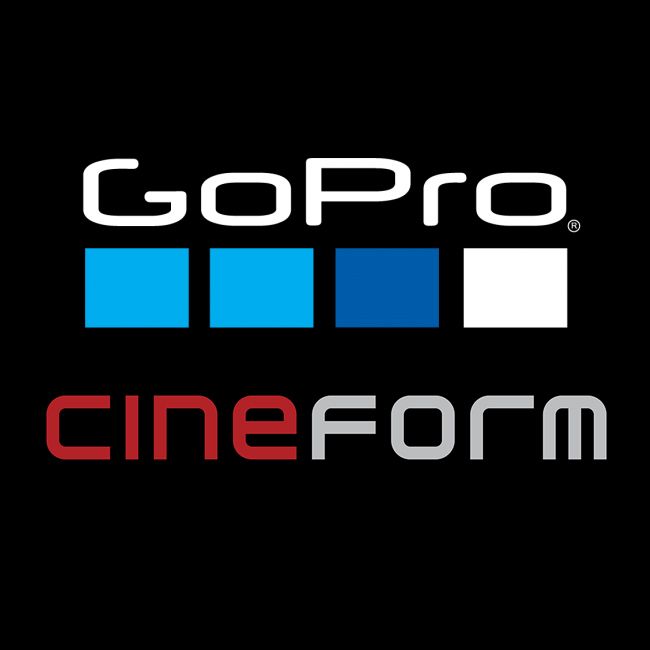The CC 2014.1 releases of After Effects, Premiere Pro, and Adobe Media Encoder introduced the ability to natively decode and encode QuickTime (.mov) files using the GoPro CineForm codec on Mac OS and Windows, meaning that you do not need to install additional codecs to use and create such files.
 When encoding GoPro CineForm movies, two different pixel formats and five different compression methods are available. To change how the GoPro CineForm movie is encoded you need to set the color depth or the quality, respectively. This is a guide for how these settings map to the encoded results.
When encoding GoPro CineForm movies, two different pixel formats and five different compression methods are available. To change how the GoPro CineForm movie is encoded you need to set the color depth or the quality, respectively. This is a guide for how these settings map to the encoded results.
Note: this article has been updated to include changes made to the GoPro CineForm color depth settings and encoding presets in Premiere Pro and Adobe Media Encoder CC 2014.2.
GoPro CineForm compression quality settings
The GoPro CineForm codec offers five levels of compression quality:
1. Low
2. Medium
3. High
4. Film Scan
5. Film Scan 2
In After Effects, Premiere Pro, and Adobe Media Encoder the compression quality is controlled by the Quality slider in the Export Settings dialog. The range of this slider is 1-5, and the values map to the compression quality settings above. The default value is 4.
For more information about the differences between these compression quality options, read GoPro’s Understanding CineForm Quality Settings article.
GoPro CineForm pixel format settings
The GoPro CineForm codec can encode pixels in YUV 4:2:2 at 10 bits per channel, or RGBA 4:4:4:4 at 12 bits per channel.
The encoded pixel format is based on the color depth and alpha channel settings you choose in the Output Module Settings dialog in After Effects or the Export Settings dialog in Premiere Pro or Adobe Media Encoder.
In After Effects:
Setting Channels to RGB or Alpha will encode to 10-bpc YUV.
Settings Channels to RGB+Alpha will encode to 12-bpc RGBA.
After Effects renders the composition frames at the color depth specified in the Project and Render Settings, and the GoPro CineForm encoder will re-sample the frames to 10-bit YUV or 12-bpc RGBA as appropriate.
In Premiere Pro and Adobe Media Encoder CC:
Depth can be set to either YUV 10-bit or RGBA 12-bit.
If Render At Maximum Depth is enabled, the frames will be rendered at 10-bpc or 16-bpc before being passed to the GoPro CineForm encoder, which will re-sample the frames to the chosen Depth as appropriate.
If Render At Maximum Depth is disabled, the frames will rendered at 8-bpc before being passed to the GoPro CineForm encoder, which will re-sample the frames to the chosen Depth as appropriate.
These settings are utilized by three encoding presets included with Premiere Pro and Adobe Media Encoder:
GoPro CineForm RGB 12-bit with alpha at Maximum Bit Depth
GoPro CineForm RGB 12-bit with alpha
GoPro CineForm YUV 10-bit
regarding previous guidance and presets
In previous guides, the pixel formats for GoPro CineForm were described as being 8-bpc YUV, 8-bpc RGBA, or 16-bpc RGBA. Premiere Pro and Adobe Media Encoder CC 2014.1 included three encoding presets that reflected this.
This information was incorrect. The Depth settings for the GoPro CineForm codec and associated encoding presets have been updated in Premiere Pro and Adobe Media Encoder CC 2014.2, as described above.
In the CC 2014.1 release, setting the Depth to 24-bit (8-bpc) would encode to 10-bpc YUV, and setting Depth to 32-bit (8-bpc with alpha) or 64-bit (16-bpc with alpha) would encode to 12-bpc RGBA.
For more information about working with the GoPro CineForm codec in After Effects, Premiere Pro, and Adobe Media Encoder, read GoPro CineForm Codec Support in Premiere Pro Help and Rich Young’s CineForm in Creative Cloud on Pro Video Coalition.
Reprinted courtesy of Tim Kurkoski
